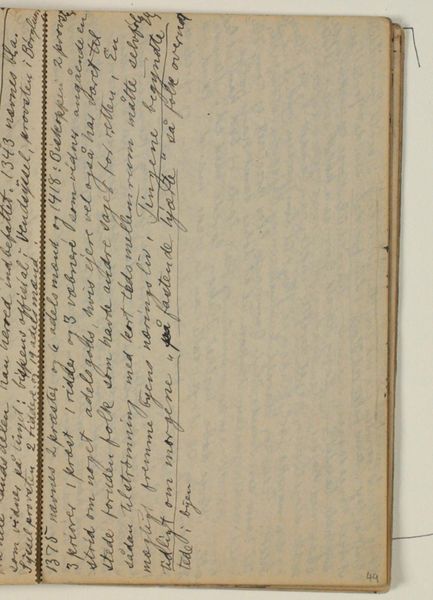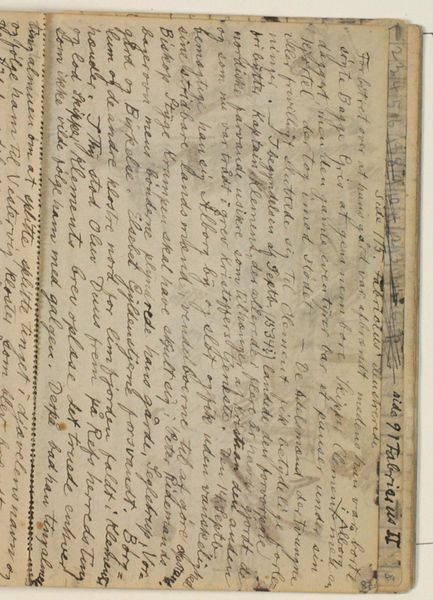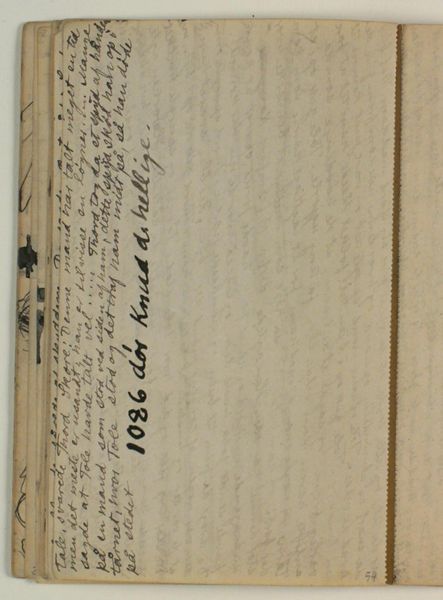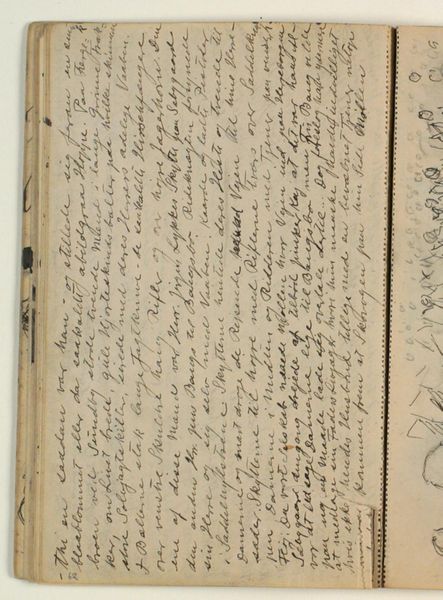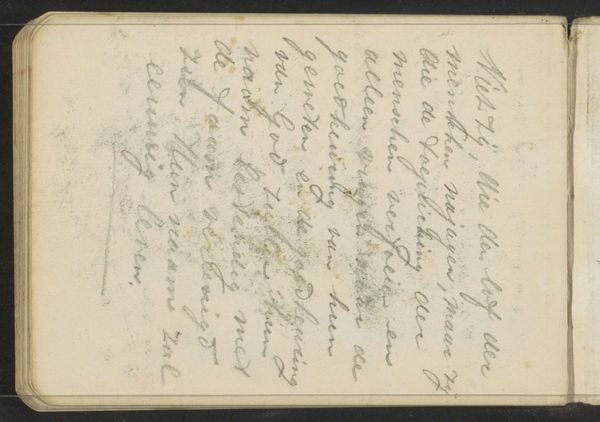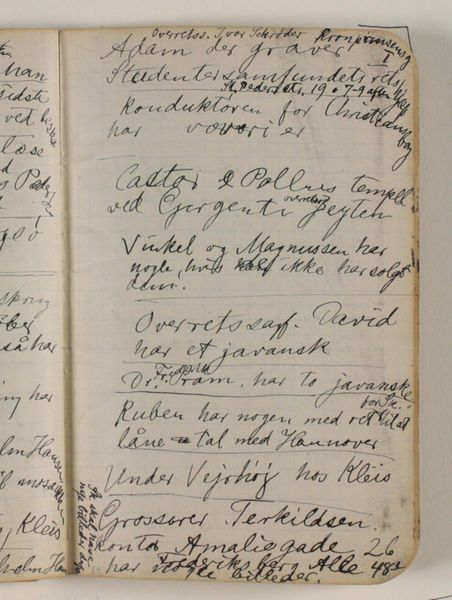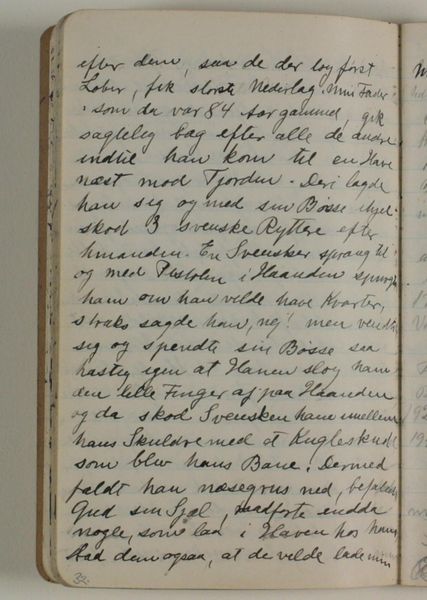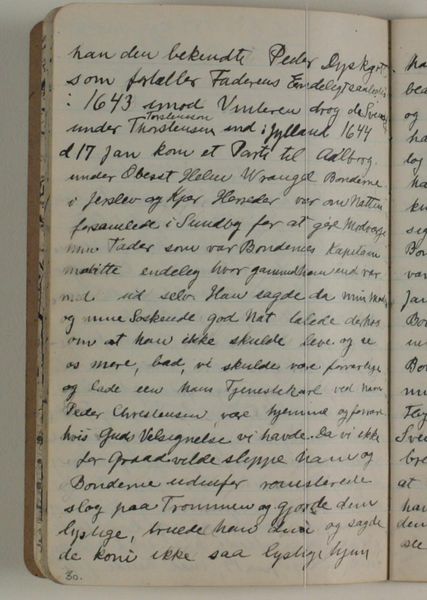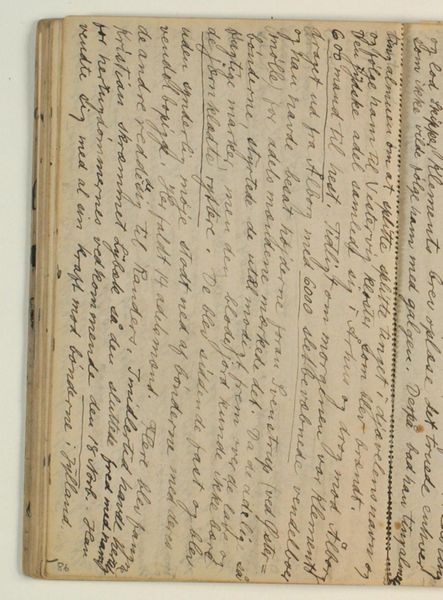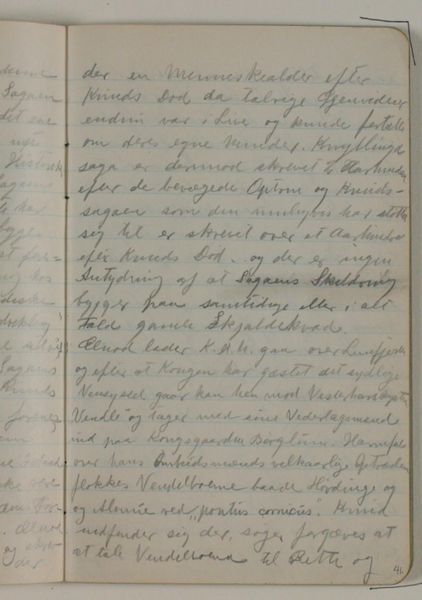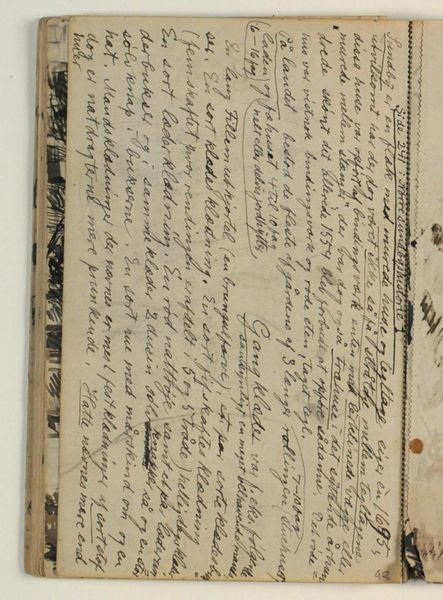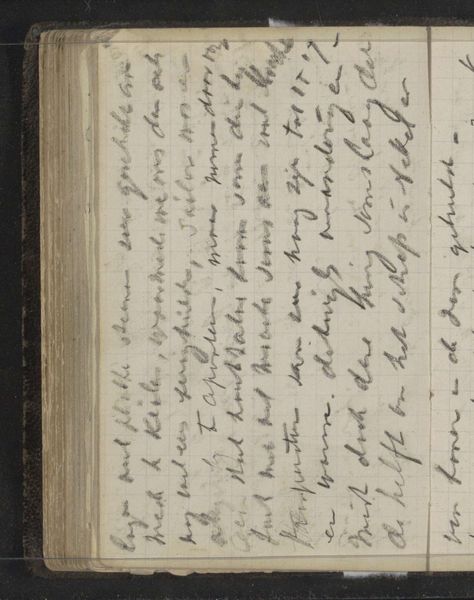
Notater vedr. Skipper Klement, afskrift af A. Fabricius "Illustreret Danmarkshistorie for Folket" 1932 - 1935
0:00
0:00
drawing
#
drawing
#
aged paper
#
toned paper
#
homemade paper
#
sketch book
#
hand drawn type
#
hardpaper
#
personal sketchbook
#
coloured pencil
#
sketchbook art
#
watercolor
Editor: This drawing, "Notater vedr. Skipper Klement, afskrift af A. Fabricius 'Illustreret Danmarkshistorie for Folket'," was created between 1932 and 1935 by Niels Larsen Stevns. It's currently held at the SMK, Statens Museum for Kunst. I find it intriguing how something so raw and immediate—a sketchbook page with handwriting—can feel like a direct connection to the artist’s thoughts. What do you see in this piece? Curator: What I find compelling is the palimpsestic quality of this sketchbook page. Think of it as a window into Stevns’s mind as he engages with Fabricius's history. The aged, toned paper becomes more than just a surface; it is a symbolic field layered with memory. Consider the colored pencil and watercolor – these mediums aren't just for depiction but create an emotional tonality. This layering can suggest how cultural memory imprints itself upon us. Do you find that the handwritten text adds another layer of meaning for you? Editor: Absolutely. The hand-drawn type, almost like personal hieroglyphs, gives the impression of unfiltered thought. It's like we're catching a glimpse into a private world of notations. The medium accentuates the sense of intimacy. Curator: Exactly. These aren’t polished pronouncements, but working notes. Notice how the sketches and text interact, blurring the lines between image and word. It encourages us to ponder how narratives are constructed, deconstructed, and then re-presented. Think of how potent the 'aged paper' is as a visual signifier. It gives immediacy but also conveys the distance of time and reflection. This interplay between image, text, and age shapes our reading. This creates the impact of emotional memory over time. What's one lasting impression for you? Editor: I see this page as a portal into a bygone era. I can sense the story coming to life through the artist's hand. Curator: I see, and that is the most remarkable function of images—cultural continuity by visual means!
Comments
No comments
Be the first to comment and join the conversation on the ultimate creative platform.
